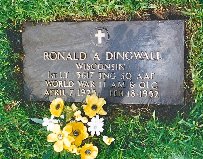On our honeymoon 38 years ago, my husband and I spent three fascinating hours in Galveston’s old city cemetery. Seriously! We had only a long weekend to enjoy the Texas Coast and had booked a charter tour of the harbor, but a cold, damp, foggy weather system cancelled the tour, and we wound up in the cemetery, reading old stones. That should have been a clue that we would both later become avid genealogical researchers.
With the advent of FindAGrave in 1998, the potential of world-wide tombstone images accessible online for free was born. Today alone, by 2:00 pm there were more than 7 million views on this amazing site, containing in excess of 102 million grave records. Even the newest of newbies quickly finds this database vital to their research. And although it may be your first stop when researching a line, it definitely should not be your last.
For more than a hundred years, family historians have recognized the importance of recording our ancestors’ gravestones. Unfortunately, those engravings are not permanent, and we owe a debt of gratitude to cemetery walkers and recorders of all types – individuals, genealogical societies, the Daughters of the American Revolution (DAR), and the Sons of the American Revolution (SAR). Many stones now unreadable have been saved by these early recorders. Sadly, with the wealth of FindAGrave so accessible, many of these earlier records and other contemporary records are neglected by researchers. If you can’t find a specific tombstone on FindAGrave, it doesn’t mean it hasn’t been preserved, in words and perhaps images.
Many local genealogical societies have their transcriptions online, and they are not necessarily also on FindAGrave. Check for local groups by Googling “(County Name) Genealogical Society.” From the group’s homepage, look for cemetery databases. A second source is the cemetery itself, as many have their grave listings online. And a third rich source is teafor2. com. The owner Allen Wheatley has photographed hundreds of thousands of tombstones in more than 30 states and posted them on the Internet. You need to know the cemetery’s name, or at least location, but this is a vast database.
If you don’t know the cemetery’s name, and if your ancestor died during the period of civil registration of deaths (generally 1907 and forward), death certificates are well worth the money if you can’t find them for free online. Many researchers think buying death certificates isn’t important if birth and death dates and parents’ names are already known. But two of my favorite pieces of information on death certificates are cemetery and mortuary names. Obviously with the cemetery names, you can better utilize online databases; but the bigger prize here can well be the funeral home that handled your ancestor’s service. Check to see if the company is still in business and call them if they are.
Most people who work in mortuaries are extremely helpful. On a single funeral record, you can find your ancestor’s life outline: birth date and place; names of parents, siblings, their spouses, children, their spouses; death information about spouses who pre-deceased your ancestor; surviving family’s names and addresses; employment, religious, and military information; copies of the obituary. In one instance, a fairly bare-bones cemetery record led to the solution of a genealogical puzzle I had tried to crack for five years, because the name and address of the person being billed was included – a daughter of my 2nd-great-grandfather. I hadn’t known about her, but researching her led to his birthplace and parents.
Cemeteries can also have important records for the genealogical researcher. If the cemeteries you’re interested in have an office, it’s worth giving them a call. They can often connect one person with other family members also buried there. If the cemeteries or funeral homes are no longer in business, try to track down the location of their archived records. Other active cemeteries and mortuaries may know about these older records, and if they don’t, city offices or state archives may. The searching can become extensive, but the results are worth the effort.
Shortly before his death from tuberculosis in 1821, the English poet John Keats wrote the masterful Ode to a Nightingale, including the famous lines
I have been half in love with easeful Death,
Call’d him soft names in many a musèd rhyme . . . .
Not nearly so elegantly, I tell my genealogy students, “If you’re interested in genealogical research, you’ve gotta love death.” They snicker uncomfortably at first. But it’s true. The number of records surrounding a death can produce a bonanza for the genealogical researcher. If you’d like assistance in tracking down these elusive records, contact the professional genealogists at RecordClick, who can help you find and love the records of your deceased relatives.
Photo courtesy of Patricia Dingwall Thompson







